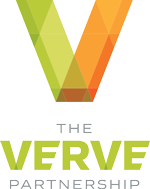Brookings Institution Publishes Report with Input from The Verve Partnership
Kelly Ennis, along with 50 other global-reaching and local-serving architects and innovation space managers, were interviewed by Julie Wagner and Dan Watch to analyze the continuum of modern innovation-oriented workspaces.
We are pleased to share the following article published by The Brookings Institution in April 2017.
Originally published by The Brookings Institution
Innovation spaces: The new design of work
Innovation spaces—buildings and interiors used in the innovation economy ranging from incubators to research institutes to innovation centers and start-up spaces—are growing significantly in cities and suburbs across the globe. In both the United States and Europe, for example, accelerators and incubators have more than doubled since the financial crisis. A new trend paper from the Brookings Institution’s Anne T. and Robert M. Bass Initiative on Innovation and Placemaking, “Innovation spaces: The new design of work”, finds that not only are these spaces proliferating, they are also changing to reflect the evolving collaborative, cross-sector, and high-tech nature of innovation.
an excerpt from page 21 of their report:
Others described the changes as a new willingness on the part of organizations and companies to talk about the intention of space rather than just design as a pure aesthetic goal. Others, still, offered how it’s not about creating a type of innovation space but, as Kelly Ennis, founding and managing principal of the Verve Partnership, wisely observed, “It’s about creating an environment that allows people to thrive.”
an excerpt from page 37 of their report:
Interviews with architects and real estate investors focused on strengthening innovation ecosystems indicate a small, but growing, practice of re-imagining the ground floor into community magnets that creatively draw like and unlike people together. “Re-making the lobby or first floor can create a real connection point—a space where you start to break down barriers,” emphasized Kelly Ennis of the Verve Partnership. Other research supports this shift. Outlined in the Journal of Open Innovation, the authors point to a growing imperative of social permeability—one that blurs the “boundaries between the living, working and playing” through a mix of uses, strengthened physical connections (such as pathways and plazas), and increased transparency.
an excerpt from page 39 of their report:
To create permeability—spaces where people are willing to enter and own: True inclusion means creating spaces where anyone feels they can own the space. Research finds that this principle of design creates economic permeability, where the activities and opportunities inside buildings are for all people.
This is the ultimate aim of the re-imagined ground floor—to essentially blur the private and public spaces, creating a safe neutral space that everyone owns. “The lobby is the front door for every single building. There are real opportunities to create to make this space more socially oriented,” offered Verve’s Ennis.
Read the full article and download report at Brookings Institution



